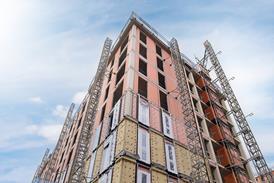New developments, such as those in the Thames Gateway, may have to adhere to codes for culture as well as design under plans being considered by the Heritage Lottery Fund
The HLF, which has doled out £3bn to heritage and cultural projects in the past decade, wants to be involved in the planning process. This would mean that the HLF would talk to people affected by new communities and ask them what cultural and heritage facilities they would like to have. Requirements for, say, new museums could then form part of the planning process.
The scheme is one of a number of changes planned by the fund as it enters its second decade.
It wants to stop concentrating on granting large sums to landmark projects and develop its skills and community-building initiatives. This shift was illustrated last month when it refused to grant £15m to help fund the Daniel Libeskind-designed extension to the Victoria & Albert Museum in South Kensington, London.
Carole Souter, the HLF chief executive, said she wanted to build on the work of the past few years by sharing best practice between different projects.
I want us to be seen as partners, not just as people who turn up and hand over a big cheque
Carole Souter, HLF chief executive
She said: “We’ve been going long enough to contribute a lot more than money to a project – we can say what works and what doesn’t and we can offer ideas to take forward. I want us to be seen as partners, not just as people who turn up and hand over a big cheque.”
Souter has been meeting regularly with Andrew Wells, John Prescott’s head of sustainable communities, as well as with Yvette Cooper, parliamentary undersecretary of state at the ODPM. The HLF has also met English Partnerships, CABE and regional development agencies, all of which have a role in developing design codes.
The proposals are already being put into practice by the Arts Council East’s “citizens’ juries”.
























No comments yet